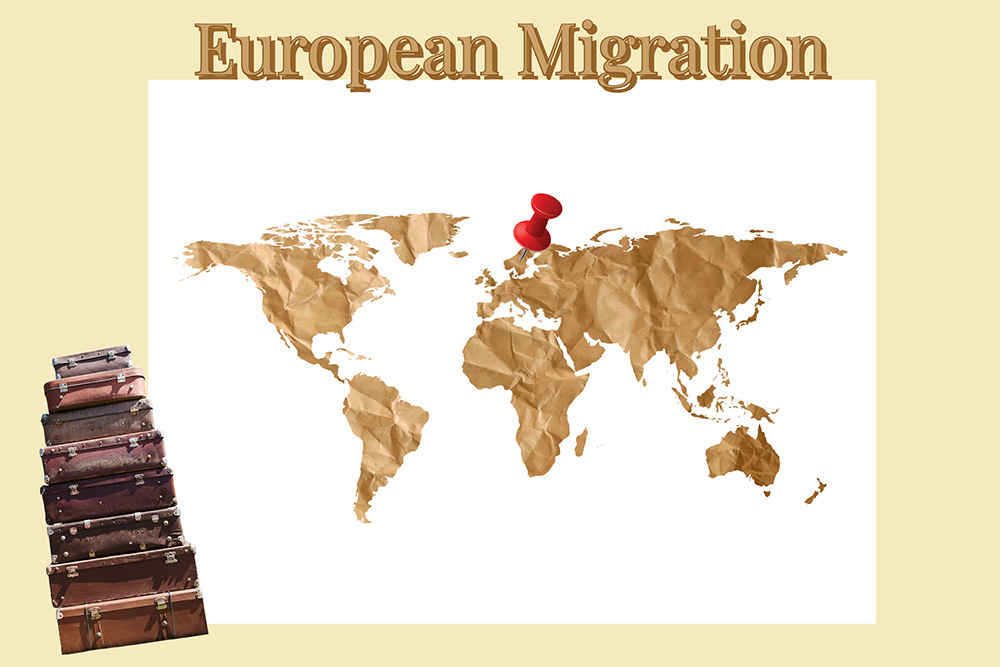The European Studies Center at the University of Pittsburgh hosted an online lecture on Wednesday, Feb. 1, discussing the topic of migration, specifically how and why the European Union has chosen different responses to refugee crises over time as part of the Europe Today lecture series.
The main speaker, Nicholas R. Micinski, is an assistant professor of political science and international affairs at the University of Maine. His field of research pertains to global governance and how international organizations respond to refugees and migration. Micinski is also the author of two books, “Delegating Responsibility: International Cooperation on Migration in the European Union” and “UN Global Compacts: Governing Migrants and Refugees.”
Micinski’s previous background in NGO work allowed him to work first hand with refugees. When he started work toward his Ph.D in migration governance in 2013, there was a mass influx of refugees entering in countries, namely Greece and Italy.
Micinski was interested in researching why this was happening and how the EU would respond or fail to respond properly to the various refugee crises while also giving some insights on the inner workings of migration governance. Micinski defines migration governance as any kind of policy tool used for influencing the flow of people across international borders. Through his research, he developed the idea of the necessary conditions for the subtypes of international cooperation, with three subtypes being coordination, subcontracting and collaboration.
The first example showcased by Micinski was the EU’s attempt at migration governance in Italy between 2014 and 2017. During that period, 600,000 refugees crossed the Mediterranean Sea, of which 13,000 died in the process. In response, the EU opened up four different hot spots for relocation purposes, in which they only relocated about 10,000 refugees to member states. They also funneled 150 million euros in emergency funding to Italy, but less than 1% of which was given to international organizations.
“Overall it was really a meager response that used coordination among member states to implement a common EU migration policy,” Micinski said.
Micinski says that the EU utilized coordination because Italy had more state capacity as well as “credible partners,” which are domestic political leaders committed to policy implementation. Italy has also had a longer history of migrational spikes, as showcased with Micinski’s Lampedusa migration model used from 2004 to 2010, and another migrational spike occurred with the North African Emergency in 2011 to 2013.
“In Italy, the history of migration crises helps show the state’s capacity and trust with the EU. That happened when the recent crisis hit, that they had high state capacity and credible partners that lead to coordination” Micinski said.
In the second example, 1.2 million people arrived in Greece by land and sea from 2015 to 2016. The EU responded with similar “hot spots” where they tried to relocate people from the Greek Islands, while only getting about 20,000 people to other member states with a huge backlog of cases depending on the year. About 700 million euros were dispensed, but luckily, they put 73% of that to international organizations. Micinski states that in this case, Greece had much lower state capacity and no credible partners, so the EU utilized subcontracting which gave responsibility to outside agencies.
However, the use of subcontracting appears to be only a short term fix to a long term problem. According to Micinski’s research, the camps in Greece were coordinated by UNHCR or
NGO, some of the international organizations weren’t even given the needed coordination or the required resources by the government.
“When I interviewed one navy commander who was in charge of a camp in Athens, he said, ‘I only put up a fence and make sure everyone is safe. I don’t know what’s going on inside.’ Instead, the camps are coordinated by UNHCR or NGO,” Micinski said.
The final example was from Poland in March of 2022 when millions of refugees were fleeing from the ongoing war in Ukraine. The EU responded by activating the temporary protection directive for the first time, marking a shift in Europeanization migrational governance. The TPD allows Ukrainians to freedom of movement within the UN, the right to work, education, housing and healthcare. Micinski would describe this as an example of collaboration since they had low capacity but a credible partner for decision making. As of January of 2023, over 8 million have crossed into the EU, with 5 million applying for temporary protection.
According to Micinski, the vast difference in response to Ukrainians when compared to the Syrian or Afghan refugees who entered Italy and Greece in the past can be attributed to a number of reasons. The main reasons come down to geopolitics, state capacity and political will, but he also believes that discrimination plays a role in the speed of the response.
“The EU generously opened its borders to white Christian Ukrainians, and refused equal protection to Syrians, Afghans and other non white asylum seekers who have a similar claim to protection,” Micinski said.
When the EU tried to coordinate migration policies in the past, the repeated policy failures pushed the EU to try more collaborative strategies. Although EU migration governance has a layer of underlying problems, Micinski research showcases how these issues can be brought into further focus and allow refugees to be more easily integrated and protected.










